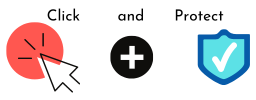Malware, or malicious software, is software that has been designed to cause harm by damaging or destroying your computer systems or data. The best-known kinds of malware are viruses: these viruses are causing the number of ransomware attacks to grow at the moment and there are other kinds of malware to be aware of too.
So, how to avoid getting infected with malware?
- Install antivirus software on all your computers and laptops, or enable your antivirus software if it is already installed. Smartphones and tablets may not need antivirus software; check out the NCSC guidance on this.
- Only download apps for mobile devices from approved stores (like Google Play or Apple App Store). Apps from other places may not have been checked for malware.
- Setting up controls on what staff accounts are able to access or do, when logged into your systems, would also help reduce the risk of accidental damage or data loss. On a related topic: admin accounts should only be used for admin work; a standard staff account should be used for everything else.
- Keep all your IT equipment up to date. Those updates that come out regularly have a purpose, they fix problems and patch security holes. By keeping everything up to date, you can improve your security. You can often set up automatic updates, but if you prefer not to do this, do remember to update as soon as you can.
- Be wary of USB drives. They are easy to use, and easy to share…so might easily have been infected with a virus. It only takes one to spread infection and potentially cause major problems. It’s better to get into the habit of transferring files in another way.
- Make sure your firewall is on. A firewall is a barrier, there to protect your network from attack. You can often adjust its settings and just by turning it on you can improve your level of security.
Our expert advice and services can help you and your organisation, so contact Click and Protect or call the team on 0113 7336250.
Read the previous post in the Foundations series: Phishing Awareness
Read the next post in the Foundations series: Passwords





